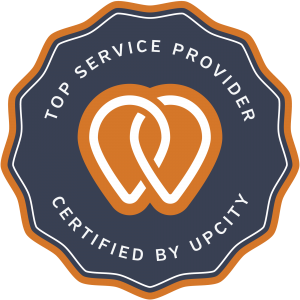Are you tired of waiting months or even years to see results from your SEO efforts? Do you want to know how to get fast SEO results without relying on backlinks? Look no further because in this article, we’ll share some tips on how to achieve quick SEO wins without links.
First, let’s define what we mean by “fast SEO results.” When we talk about fast results, we’re not talking about overnight success. SEO is a long-term strategy, and it takes time to build authority, trust, and relevance with search engines. However, there are some tactics you can use to accelerate your SEO efforts and see results within weeks instead of months.
One of the ways to get fast SEO results without links is to use a simulator that can mimic the behavior of real visitors. Similar to how YouTube, TikTok, and Facebook initially throttle the views on videos to get them in front of people, this technology simulates visitors visiting a site, reading content, and clicking specific links.
This creates a ‘viral’ effect that boosts the ranking and visibility of the website significantly, without relying on any links that might appear unnatural. Results take between 1 to 2 weeks to become visible. This simulator primarily targets 5 keywords, but as rankings improve, it can boost relevant keywords too. Eventually, up to 10 keywords can improve.
- Optimize Your On-Page SEO
On-page SEO refers to the elements on your website that you can control, such as your content, meta tags, and URL structure. On-page optimization is a critical factor in ranking high on search engines, and it’s also one of the fastest ways to improve your SEO.
To optimize your on-page SEO, start with your content. Make sure it’s high-quality, relevant, and optimized for your target keywords. Use your focus keyword in your page title, meta description, headers, and throughout your content, but don’t overdo it. Keyword stuffing can hurt your SEO and make your content unreadable.
In addition to your content, optimize your meta tags, including your title tag and meta description. These are the snippets that appear in search engine results, and they can impact whether someone clicks on your link or not. Make sure your title and description accurately reflect the content of your page and include your focus keyword.
- Use Social Media to Drive Traffic
Social media can be a powerful tool for driving traffic to your website, and it can also help improve your SEO. When you share your content on social media, you’re exposing it to a broader audience, which can lead to more clicks, shares, and backlinks.
To make the most of social media, focus on the platforms where your audience is most active. For example, if you’re targeting a younger audience, you might want to focus on TikTok or Instagram, while if you’re targeting professionals, LinkedIn might be a better choice.
When you share your content on social media, make sure to include a link back to your website. This can drive traffic to your site and also signal to search engines that your content is valuable and relevant.
- Focus on User Experience
Search engines want to deliver the best possible experience to their users, which means they favor websites that provide a positive user experience. By focusing on user experience, you can improve your SEO and also create a better experience for your visitors.
To improve your user experience, start by optimizing your site speed. A slow-loading site can hurt your SEO and drive visitors away. Use tools like Google PageSpeed Insights to identify areas where you can improve your site speed.
In addition to site speed, focus on the overall design and functionality of your site. Make sure it’s easy to navigate, and that your content is well-organized and easy to read. Use images and videos to break up your content and make it more engaging.
- Use Internal Linking
Internal linking refers to linking from one page on your website to another page on your website. Internal linking can help improve your SEO by signaling to search engines which pages on your site are most important and relevant.
To use internal linking effectively, start by identifying your most important pages. These might be your homepage, your product pages, or your blog. Then, link to these pages from other pages on your site, using relevant anchor text.
Internal linking can also help keep visitors on your site longer, which can reduce your bounce rate and improve your engagement metrics. This, in turn, can signal to search engines that your site provides.
5. Visitor simulator to Get Fast SEO Results
Just like social media platforms such as YouTube, TikTok, and Facebook, we use a technology that simulates visitors coming to your site, reading the content, and clicking on specific links. This technology creates a “viral” effect, which significantly boosts your website’s ranking and visibility without using any artificial means such as paid links.
Our simulator targets 5 keywords initially, but as your rankings improve, it starts boosting relevant keywords too. This results in up to 10 keywords showing improvement. Typically, you’ll see results within 1-2 weeks.
After about a month, we’ll start building relevant and clean backlinks, which will be indexed naturally by Google. These backlinks help to maintain the improved rankings after we remove the simulator.
Overall, our SEO techniques are designed to deliver real and lasting results for your website. With our proven methods, you can expect to see a noticeable improvement in your website’s ranking and visibility over time.



